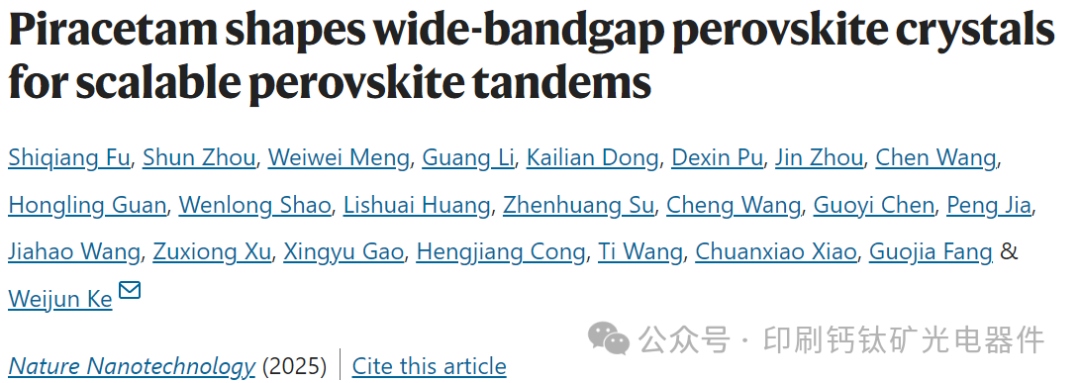 Fully perovskite tandem solar cells (TSC) exhibit excellent performance and wide applicability. However, significant challenges remain in bridging the power conversion efficiency (PCE) gap between small-area and large-area (> 1cm2) devices, which poses a substantial barrier to the commercialization of fully perovskite TSC. In light of this, the team led by Ke Weijun at Wuhan University published an article in Nature Nanotechnology titled “Piracetam shapes wide-bandgap perovskite crystals for scalable perovskite tandems,” introducing a crystal modifier specifically targeting wide-bandgap perovskite, piracetam, which can homogenize the top wide-bandgap sub-cell and assist in the preparation of large-area TSC. Piracetam, featuring amide and pyrrolidone moieties, initially modulates the nucleation of perovskite, leading to large-sized grains, preferred (110) orientation, enhanced crystallinity, and uniform optoelectronic performance. During the subsequent annealing process, it further eliminates residual PbI2 and promotes the formation of one-dimensional (Pi) PbI3 (Pi = piracetam) perovskite nanoneedles at the grain boundaries and surfaces.As a result, a single-junction solar cell with a 1.77 eV bandgap achieved a certified open-circuit voltage of 1.36 V and a PCE of 20.35%. Furthermore, fully perovskite TSCs with aperture areas of 0.07 cm2 and 1.02 cm2 produced PCEs of 28.71% (stabilized at 28.55%, certified at 28.13%) and 28.20% (stabilized at 28.05%, certified at 27.30%), respectively, indicating minimal PCE loss of 0.51% when transitioning from small-area to large-area devices. Additionally, piracetam demonstrated broad applicability across different perovskite compositions, with PCE increasing from 23.56% to 25.71% for the single-junction 1.56 eV bandgap counterpart. Thus, this method provides an effective pathway for scalable and efficient fully perovskite TSC.Innovations:
Fully perovskite tandem solar cells (TSC) exhibit excellent performance and wide applicability. However, significant challenges remain in bridging the power conversion efficiency (PCE) gap between small-area and large-area (> 1cm2) devices, which poses a substantial barrier to the commercialization of fully perovskite TSC. In light of this, the team led by Ke Weijun at Wuhan University published an article in Nature Nanotechnology titled “Piracetam shapes wide-bandgap perovskite crystals for scalable perovskite tandems,” introducing a crystal modifier specifically targeting wide-bandgap perovskite, piracetam, which can homogenize the top wide-bandgap sub-cell and assist in the preparation of large-area TSC. Piracetam, featuring amide and pyrrolidone moieties, initially modulates the nucleation of perovskite, leading to large-sized grains, preferred (110) orientation, enhanced crystallinity, and uniform optoelectronic performance. During the subsequent annealing process, it further eliminates residual PbI2 and promotes the formation of one-dimensional (Pi) PbI3 (Pi = piracetam) perovskite nanoneedles at the grain boundaries and surfaces.As a result, a single-junction solar cell with a 1.77 eV bandgap achieved a certified open-circuit voltage of 1.36 V and a PCE of 20.35%. Furthermore, fully perovskite TSCs with aperture areas of 0.07 cm2 and 1.02 cm2 produced PCEs of 28.71% (stabilized at 28.55%, certified at 28.13%) and 28.20% (stabilized at 28.05%, certified at 27.30%), respectively, indicating minimal PCE loss of 0.51% when transitioning from small-area to large-area devices. Additionally, piracetam demonstrated broad applicability across different perovskite compositions, with PCE increasing from 23.56% to 25.71% for the single-junction 1.56 eV bandgap counterpart. Thus, this method provides an effective pathway for scalable and efficient fully perovskite TSC.Innovations:
-
Novel Crystal Modifier: The researchers introduced piracetam as a specially designed crystal modifier to improve the crystal structure and optoelectronic performance of wide-bandgap perovskite. This approach is novel in the literature as it utilizes drug molecules to optimize the performance of perovskite materials.
-
Improved Crystal Quality: Piracetam promotes the formation of large-sized crystals and preferential (110) crystal plane orientation by modulating the nucleation and growth processes of perovskite, thereby enhancing the crystallinity and uniform optoelectronic properties of the crystals.
-
Wide Applicability: Piracetam exhibits broad applicability across different perovskite compositions, being suitable not only for wide-bandgap perovskite but also for normal bandgap perovskite, demonstrating its versatility across different material systems.
Future Prospects:
-
Stability of Large-Area Modules: Despite progress in minimizing PCE loss from small-area to large-area devices, the long-term stability and durability of large-area modules in practical applications still require further research and optimization.
-
Phase Separation and Ion Migration: In large-area devices, phase separation and ion migration remain major factors affecting stability. Future research should focus on developing more stable materials and interface engineering strategies to mitigate these adverse phenomena.
-
Environmental Adaptability: Research should explore how to enhance the adaptability and stability of perovskite solar cells under varying environmental conditions, including changes in temperature, humidity, and light intensity.
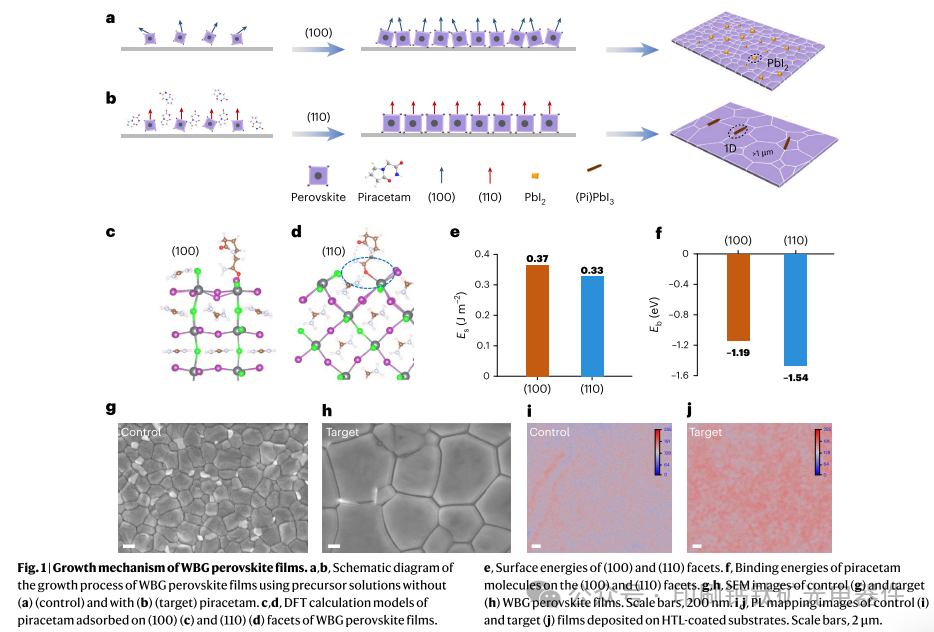
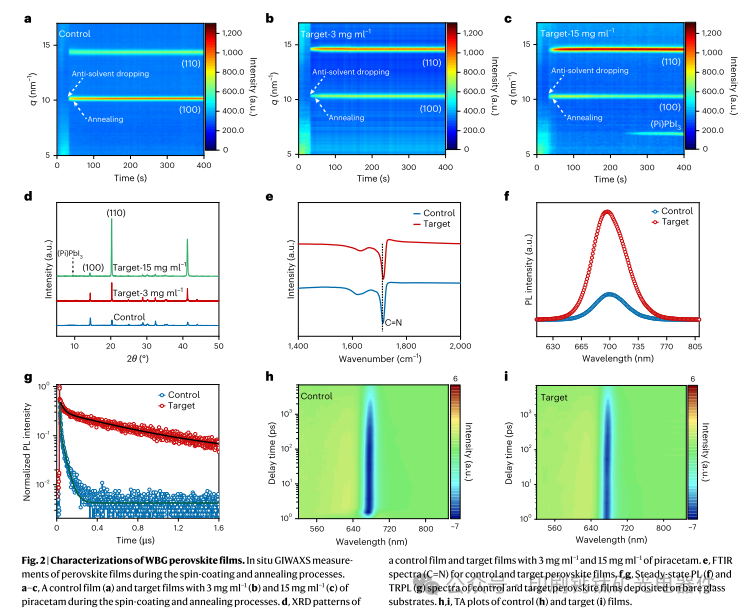
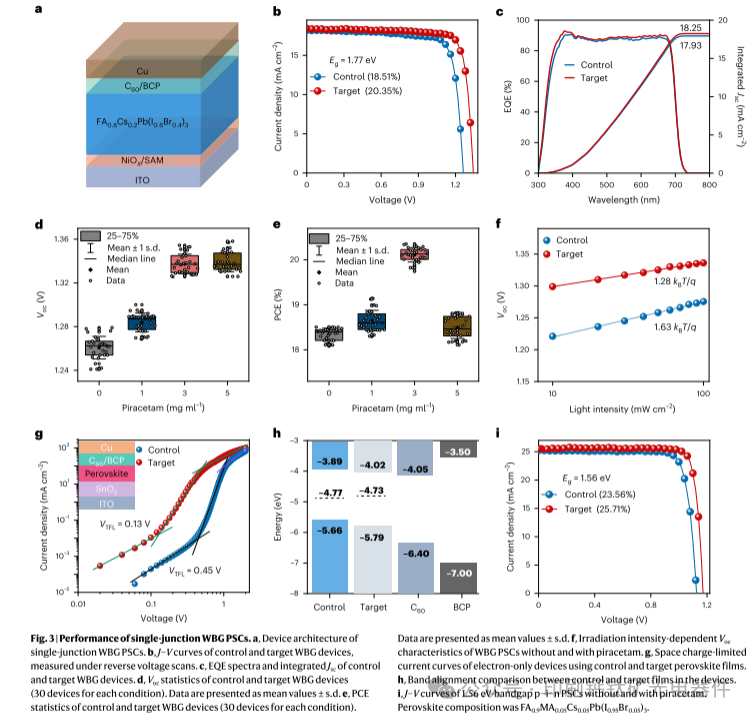
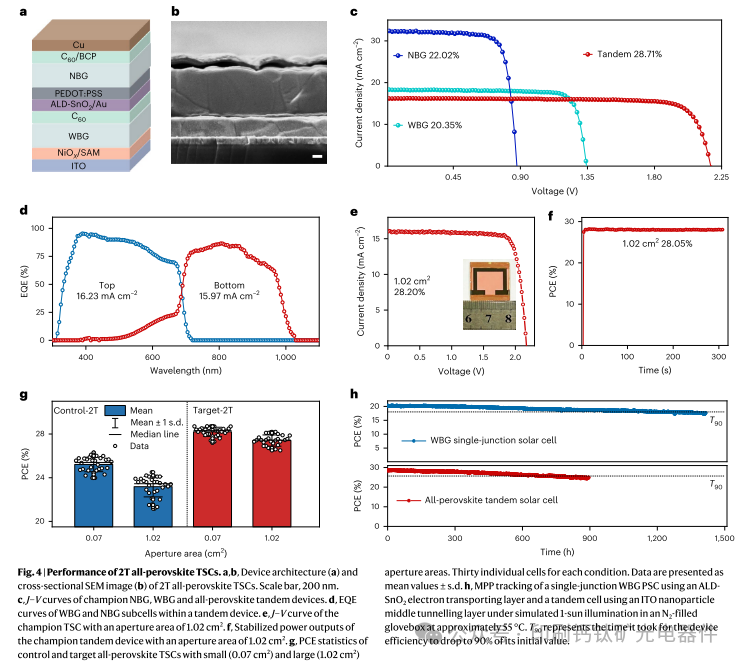
Original link: https://doi.org/10.1038/s41565-025-01899-z